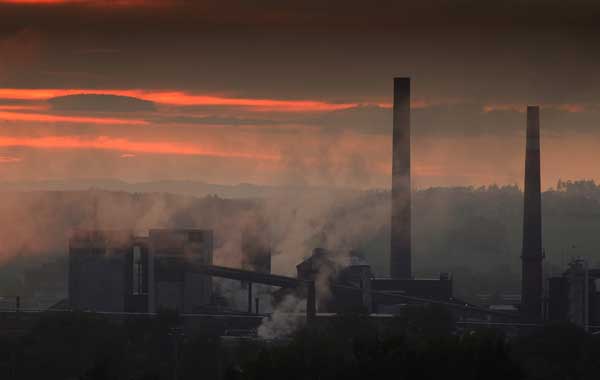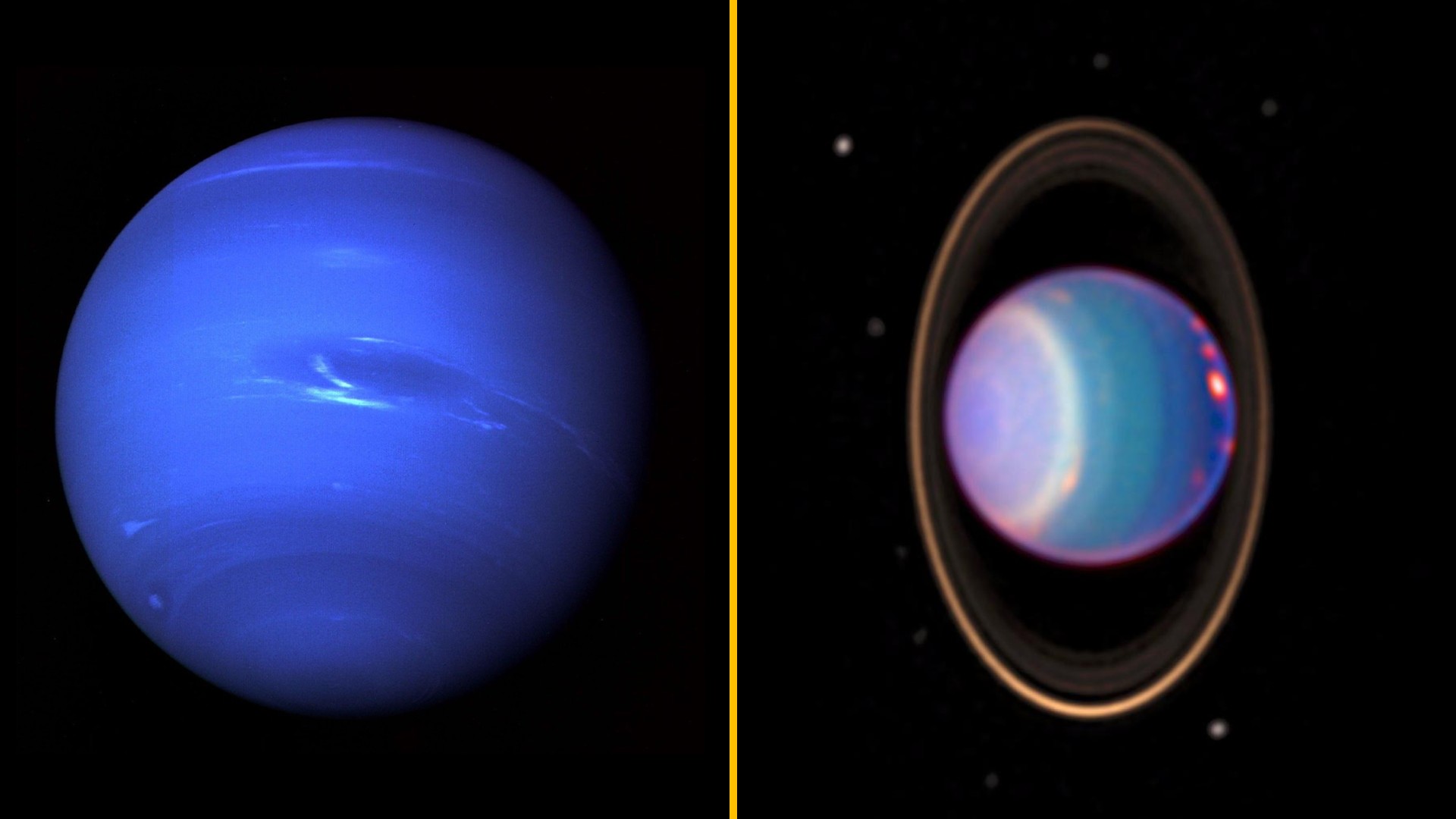Pollution facts and types of pollution
The environment can get contaminated in a number of different ways.

Pollution is the process of making land, water, air or other parts of the environment dirty and not safe or suitable to use. This can be done through the introduction of a contaminant into a natural environment, but the contaminant doesn't need to be tangible. Things as simple as light, sound and temperature can be considered pollutants when introduced artificially into an environment.
Toxic pollution affects more than 200 million people worldwide, according to Pure Earth, a non-profit environmental organization. In some of the world's worst polluted places, babies are born with birth defects, children have lost 30 to 40 IQ points, and life expectancy may be as low as 45 years because of cancers and other diseases. Read on to find out more about specific types of pollution.
Land pollution
Land can become polluted by household garbage and by industrial waste. In 2014, Americans produced about 258 million tons of solid waste, according to the U.S. Environmental Protection Agency. A little over half of the waste — 136 million tons— was gathered in landfills. Only about 34% was recycled or composted.
Organic material was the largest component of the garbage generated, the EPA said. Paper and paperboard accounted for more than 26%; food was 15% and yard trimmings were 13%. Plastics comprised about 13% of the solid waste, while rubber, leather and textiles made up 9.5% and metals 9%. Wood contributed to 6.2% of the garbage; glass was 4.4% and other miscellaneous materials made up about 3%.
Commercial or industrial waste is a significant portion of solid waste. According to the University of Utah, industries use 4 million pounds of materials in order to provide the average American family with needed products for one year. Much of it is classified as non-hazardous, such as construction material (wood, concrete, bricks, glass, etc.) and medical waste (bandages, surgical gloves, surgical instruments, discarded needles, etc.). Hazardous waste is any liquid, solid or sludge waste that contain properties that are dangerous of potentially harmful to human health or the environment. Industries generate hazardous waste from mining, petroleum refining, pesticide manufacturing and other chemical production. Households generate hazardous waste as well, including paints and solvents, motor oil, fluorescent lights, aerosol cans and ammunition.
Water pollution
Water pollution happens when chemicals or dangerous foreign substances are introduced to water, including toxic chemicals, sewage, pesticides and fertilizers from agricultural runoff, or metals like lead or mercury. According to the Environmental Protection Agency (EPA), 44% of assessed stream miles, 64% of lakes and 30% of bay and estuarine areas are not clean enough for fishing and swimming. The EPA also states that the United State's most common contaminants are bacteria, mercury, phosphorus and nitrogen. These come from the most common sources of contaminates, that include agricultural runoff, air deposition, water diversions and channelization of streams.
Water pollution isn't just a problem for the United States. According to United Nations, 783 million people do not have access to clean water and around 2.5 billion do not have access to adequate sanitation. Adequate sanitation helps to keep sewage and other contaminants from entering the water supply.
Get the world’s most fascinating discoveries delivered straight to your inbox.
According to National Oceanic and Atmospheric Administration (NOAA), 80% of pollution in marine environment comes from the land through sources like runoff. Water pollution can also severely affect marine life. For example, sewage causes pathogens to grow, while organic and inorganic compounds in water can change the composition of the precious resource. According to the EPA, low levels of dissolved oxygen in the water are also considered a pollutant. Dissolved is caused by the decomposition of organic materials, such as sewage introduced into the water.
Warming water can also be harmful. The artificial warming of water is called thermal pollution. It can happen when a factory or power plant that is using water to cool its operations ends up discharging hot water. This makes the water hold less oxygen, which can kill fish and wildlife. The sudden change of temperature in the body of water can also kill fish. According to the University of Georgia, it is estimated that around half of the water withdrawn from water systems in the United States each year is used for cooling electric power plants.
"In nearly all cases, 90% of this water is returned to its source, where it can raise the water temperature in an area immediately surrounding the water discharge pipe. Depending on water flow, the water temperature quickly returns to ambient temperatures that do not harm fish." Donn Dears, former president of TSAugust, a not for profit corporation organization focused on energy issues, told Live Science.
Nutrient pollution, also called eutrophication, is another type of water pollution. It is when nutrients, such as nitrogen, are added into bodies of water. The nutrient works like fertilizer and makes algae grow at excessive rates, according to NOAA. The algae blocks light from other plants. The plants die and their decomposition leads to less oxygen in the water. Less oxygen in the water kills aquatic animals.
Air pollution
The air we breathe has a very exact chemical composition; 99% of it is made up of nitrogen, oxygen, water vapor and inert gases. Air pollution occurs when things that aren't normally there are added to the air. A common type of air pollution happens when human activity releases particles into the air from burning fossil fuels. This pollution looks like soot, containing millions of tiny particles, floating in the air.
Another common type of air pollution is dangerous gases, such as sulfur dioxide, nitrogen oxides, carbon monoxide and chemical vapors. These can take part in further chemical reactions once they are in the atmosphere, creating acid rain and smog. Other sources of air pollution can come from within buildings, such as secondhand smoke.
Finally, air pollution can take the form of greenhouse gases, such as carbon dioxide or sulfur dioxide, which are warming the planet through the greenhouse effect. The greenhouse effect is when gases absorb the infrared radiation that is released from Earth, preventing the heat from escaping. This is a natural process that keeps our atmosphere warm. If too many gases are introduced into the atmosphere, though, more heat is trapped and this can make the planet artificially warm, according to Columbia University.
Air pollution kills more than 2 million people each year, according to a study published in the journal of Environmental Research Letters. The effects of air pollution on human health can vary widely depending on the pollutant, according to Hugh Sealy, professor and director of the environmental and occupational health track at the Department of Public Health and Preventive Medicine, St. George's University, St. George's, Grenada. If the pollutant is highly toxic, the effects on health can be widespread and severe. For example, the release of methyl isocyanate gas at Union Carbide plant in Bhopal in 1984 killed over 2,000 people, and over 200,000 suffered respiratory problems. An irritant (e.g. particulates less than 10 micrometers) may cause respiratory illnesses, cardiovascular disease and increases in asthma. "The very young, the old and those with vulnerable immune systems are most at risk from air pollution. The air pollutant may be carcinogenic (e.g. some volatile organic compounds) or biologically active (e.g. some viruses) or radioactive (e.g. radon). Other air pollutants like carbon dioxide have an indirect impact on human health through climate change," Sealy told Live Science.
Noise pollution
Even though humans can't see or smell noise pollution, it still affects the environment. Noise pollution happens when the sound coming from planes, industry or other sources reaches harmful levels. Research has shown that there are direct links between noise and health, including stress-related illnesses, high blood pressure, speech interference, hearing loss. For example, a study bythe WHO Noise Environmental Burden on Disease working group found that noise pollution may contribute to hundreds of thousands of deaths per year by increasing the rates of coronary heart disease. Under the Clean Air Act, the EPA can regulate machine and plane noise.
Underwater noise pollution coming from ships has been shown to upset whales' navigation systems and kill other species that depend on the natural underwater world. Noise also makes wild species communicate louder, which can shorten their lifespan.
Light pollution
Most people can't imagine living without the modern convenience of electric lights. For the natural world, though, lights have changed the way that days and nights work. Some consequences of light pollution are:
- Some birds sing at unnatural hours in the presence of artificial light.
- Scientists have determined that long artificial days can affect migration schedules, as they allow for longer feeding times.
- Streetlights can confuse newly hatched sea turtles that rely on starlight reflecting off the waves to guide them from the beach to the ocean. They often head in the wrong direction.
- Light pollution, called sky glow, also makes it difficult for astronomers, both professional and amateur, to properly see the stars.
- Plant's flowering and developmental patterns can be entirely disrupted by artificial light.
- According to a study by the American Geophysical Union, light pollution could also be making smog worse by destroying nitrate radicals that helps the dispersion of smog.
Turning on so many lights may not be necessary. Research published by International Journal of Science and Research estimates that over-illumination wastes about 2 million barrels of oil per day and lighting is responsible for one-fourth of all energy consumption worldwide.
Other pollution facts:
- Americans generate 30 billion foam cups, 220 million tires, and 1.8 billion disposable diapers every year, according to the Green Schools Alliance.
- According to the WHO, ambient air pollution contributes to 6.7% of all deaths worldwide.
- The Mississippi River drains the lands of nearly 40% of the continental United Sates. It also carries an estimated 1.5 million metric tons of nitrogen pollution into the Gulf of Mexico each year, resulting in a dead zone each summer about the size of New Jersey.
- Pollution in China can change weather patterns in the United States. It takes just five days for the jet stream to carry heavy air pollution from China to the United States, where it stops clouds from producing rain and snow.
- About 7 million premature deaths annually linked to air pollution, according to WHO. That is one in eight deaths worldwide.
Additional resources



